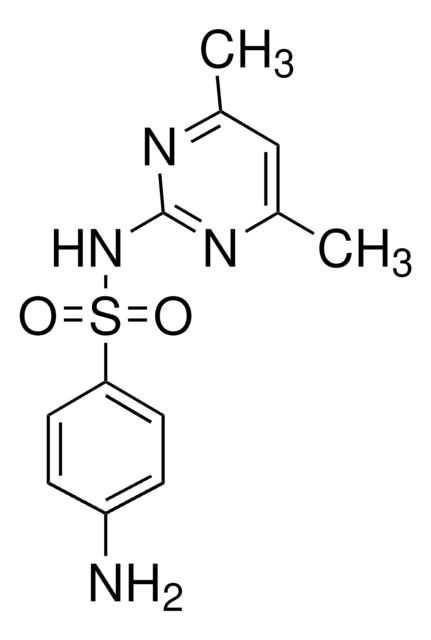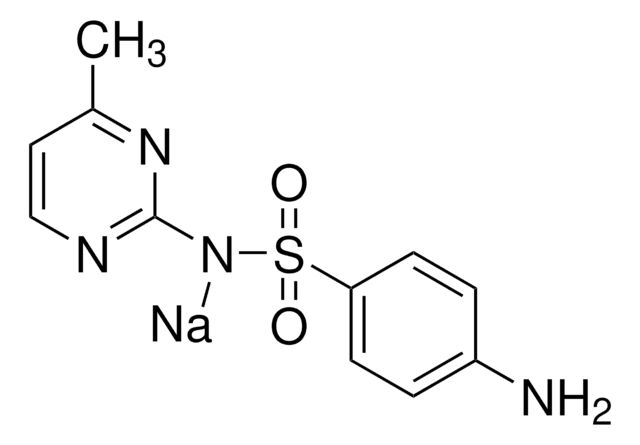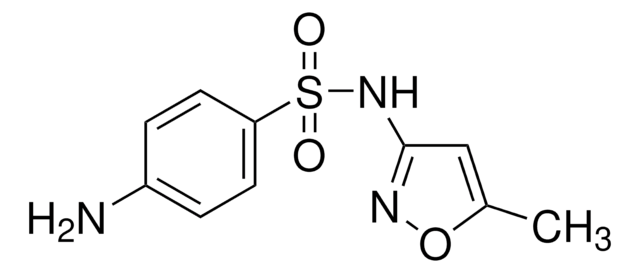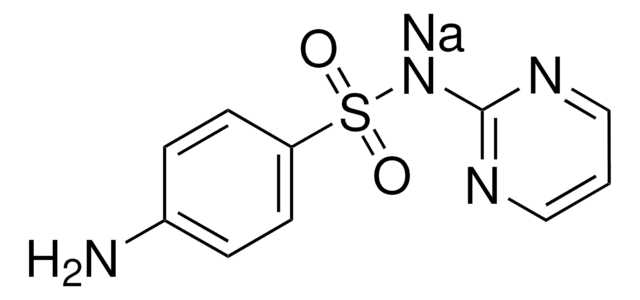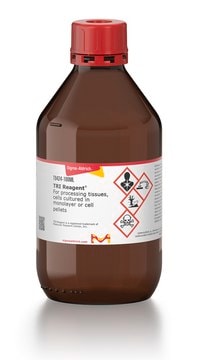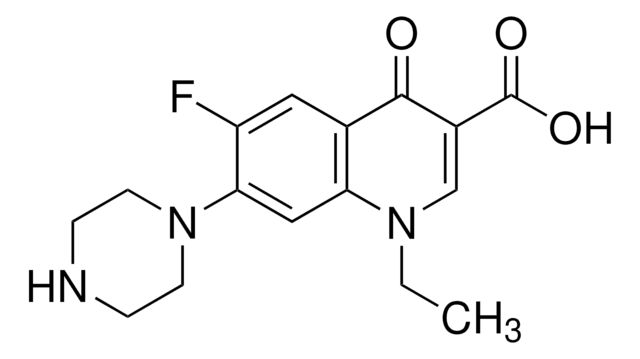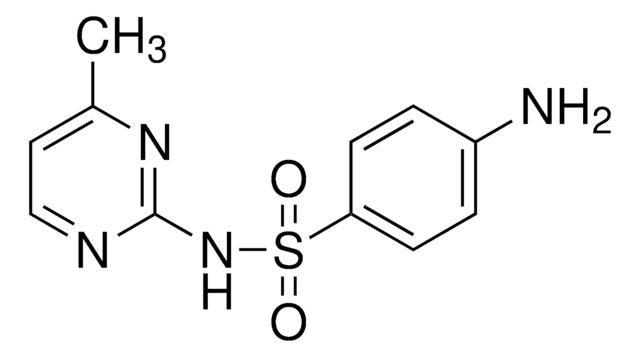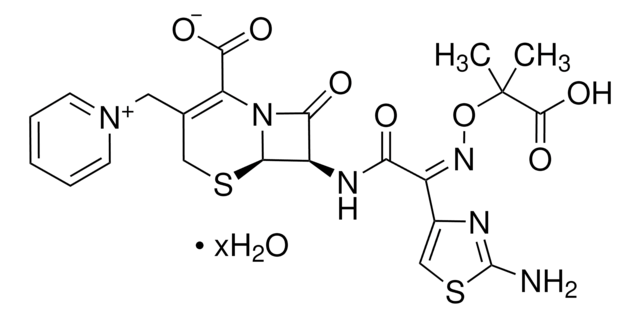S5637
Sulfamethazine sodium salt
≥98%
Synonyme(s) :
4-Amino-N-(4,6-dimethyl-2-pyrimidinyl)benzenesulfonamide
About This Item
Produits recommandés
Niveau de qualité
Essai
≥98%
Forme
powder
Conditions de stockage
(Keep container tightly closed in a dry and well-ventilated place.)
Couleur
white to off-white
Solubilité
H2O: soluble 50 mg/mL
Spectre d'activité de l'antibiotique
Gram-negative bacteria
Gram-positive bacteria
Mode d’action
DNA synthesis | interferes
enzyme | inhibits
Température de stockage
2-8°C
Chaîne SMILES
[Na].Cc1cc(C)nc(NS(=O)(=O)c2ccc(N)cc2)n1
InChI
1S/C12H14N4O2S.Na.H/c1-8-7-9(2)15-12(14-8)16-19(17,18)11-5-3-10(13)4-6-11;;/h3-7H,13H2,1-2H3,(H,14,15,16);;
Clé InChI
WIVZAHIZHZEEOX-UHFFFAOYSA-N
Catégories apparentées
Description générale
Application
Actions biochimiques/physiologiques
Conditionnement
Autres remarques
Mention d'avertissement
Warning
Mentions de danger
Conseils de prudence
Classification des risques
Acute Tox. 4 Oral
Code de la classe de stockage
11 - Combustible Solids
Classe de danger pour l'eau (WGK)
WGK 3
Point d'éclair (°F)
Not applicable
Point d'éclair (°C)
Not applicable
Faites votre choix parmi les versions les plus récentes :
Déjà en possession de ce produit ?
Retrouvez la documentation relative aux produits que vous avez récemment achetés dans la Bibliothèque de documents.
Les clients ont également consulté
Notre équipe de scientifiques dispose d'une expérience dans tous les secteurs de la recherche, notamment en sciences de la vie, science des matériaux, synthèse chimique, chromatographie, analyse et dans de nombreux autres domaines..
Contacter notre Service technique